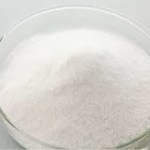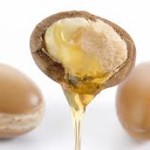 The researchers found that for skin whitening process it was safer to use the ester formation of the acid and for potential depigmentation of hyperpigmented areas on the skin. (1) Therefore the ester formulation was believed to be safer to reduce the appearance of brown pigmentation on the skin.
The researchers found that for skin whitening process it was safer to use the ester formation of the acid and for potential depigmentation of hyperpigmented areas on the skin. (1) Therefore the ester formulation was believed to be safer to reduce the appearance of brown pigmentation on the skin.
One of the dangers of using Kojic acid on the skin is sensitization and increasing sensitivity, reducing the amount of melanin in the skin and therefore the natural protection against the sun’s UV rays. There have also been conflicting information published about the safety of using Kojic acid on the skin and whether it is carcinogenic, or will trigger cancer. Melanoma, or skin cancer originating in the melanocyte cells of the body, is one of the most aggressive types of cancer.
The body has melanocytes in the skin, bowel and the eye. But it is the skin that has the most melanocytes which are responsible for the darkening of your skin when you are in the sun, your beauty marks and age spots. Because Kojic acid works directly on the production of melanin from the melanocytes more research is needed to determine the long term effects of using this lightening agent on the skin in high concentrations.
At this time, concentrations of 1% have been found to pose a risk to the user. (2)
References:
(1) Journal of Biomedicine and Biotechnology: Depgimenting Effect of Kojic Acid Esters in Hyperpigmented B16F1 Melanoma Cells
http://www.ncbi.nlm.nih.gov/pmc/articles/PMC3468271/
(2) Directorate-General for Health and Consumers: Scientific Committee on Consumer Products
http://ec.europa.eu/health/ph_risk/committees/04_sccp/docs/sccp_o_148.pdf
RESOURCES
Journal of the American Chemical Society: The Production of Kojic Acid by Aspergillus Flavus
http://pubs.acs.org/doi/abs/10.1021/ja01353a050
Monographs: Kojic Acid
http://monographs.iarc.fr/ENG/Monographs/vol79/mono79-20.pdf
SkinStore: Kojic Acid
http://www.skinstore.com/kojic-acid.aspx
| Advertisement | |
 |
|


Leave a Reply